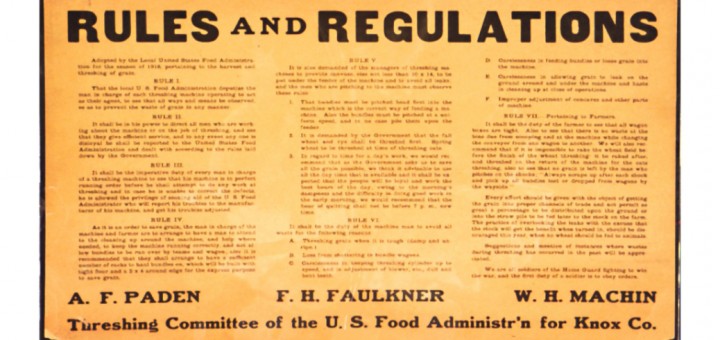Dennis Gartman – Rules of Trading – Investor Profile

This article is part of our ‘Guru’ series – investor profiles of those who have succeeded in the markets, with takeaways for the private investor in the UK.
You can find the rest of the series here.
Contents
- Dennis Gartman
- 1 – Never add to a losing position
- 2 – Invest on the winning side
- 3 – Don’t hold on to losing positions
- 4 – Go where the strength is
- 5 – Sell weak markets and buy strong ones
- 6 – Go long in bull markets and short in bear markets
- 7 – Markets can remain illogical for longer than you can remain solvent
- 8 – Trading runs in streaks
- 9 – Think like a fundamentalist, trade like a technician
- 10 – Keep your technical systems simple
- 11 – Psychology is more important than economics
- 12 – Do more of what works and less of what doesn’t
- Conclusions
Dennis Gartman
Dennis Gartman began trading in the 1970s. He analyzes the currency, commodity, energy, and metals markets and has been publishing a daily market commentary – The Gartman Letter – since 1987, primarily for an institutional clientele.
He often appears in the financial media and as a speaker at investment conferences. He also trades – on the record – every day, and he uses a list of his Rules of Trading.
Dennis appears in John Mauldin’s book “Just One Thing”, where he covers his (surprisingly short and focused) list of trading rules.
1 – Never add to a losing position
Or, to put it another way, never – ever, under any circumstances – average down. Eventually, this is what will bust you. This is what did for LTCM, Barings and Sumitomo Copper.
The chances are that your net worth will decrease. You may get lucky, but for everyone who gets lucky, there is another who does not, and is out of the game.
Stick to buying things that are going up, at progressively higher prices. Everything goes back down in the end, and the last position you buy will be a loser, but the earlier buys should make up for it.
If you keep buying at higher prices, the market will keep telling you that you are correct.
Dennis likes this rule so much he repeated it as his rule number two, but my plan is to keep the list as short as possible.
2 – Invest on the winning side
It is not our duty to trade upon the bullish side, nor the bearish side, but upon the winning side. – Jesse Livermore
Learn to invest on the winning side, and be willing to change sides immediately when one side has gained the upper hand.
Sir, the facts have changed regarding this company, and when the facts change, I change. What do you do, Sir? – John Maynard Keynes
3 – Don’t hold on to losing positions
Capital comes in two varieties: mental and financial, and of the two, mental capital is the most important.
Holding on to losing positions exhausts your mental capital more seriously than your cash. Nurturing a losing position will make you avoid potentially profitable trades.
4 – Go where the strength is
Or, the trend is your friend.
The objective is not to buy low and to sell high, but to buy high and sell higher, or to sell low and buy back lower.
It’s hard to know when a price is really low or high, but it’s easier to see what the trend is and act on it.
Once a trend becomes established, it can run much farther than the most optimistic or most pessimistic can imagine.
5 – Sell weak markets and buy strong ones
Or as Dennis puts it: “sell markets that show the greatest weakness; buy markets that show the greatest strength”. This sound very much like rules 2 and 4 to me.
6 – Go long in bull markets and short in bear markets
As usual, Dennis has a longer version of the rule: “In a bull market we can only be long or neutral; in a bear market we can only be bearish or neutral”.
This is another variation of the trend is your friend and / or cut your losses and run your winners, only applied to markets.
7 – Markets can remain illogical for longer than you can remain solvent
This is another quote from Keynes.
Once again it covers the same basic ground, but from another angle: it doesn’t matter if you are convinced that you are right, you have to follow the market trend. Dennis has no time for the rational markets theory.
8 – Trading runs in streaks
This is a variation on the general rule to cut your trading size and frequency when things are going badly.
And of course, the opposite: scale up – trade large and often – when things are going well.
This approach is very similar to that of the professional card player or sports better – you have to play big when the odds (for whatever reason) are in your favour.
9 – Think like a fundamentalist, trade like a technician
This rule is really about waiting for the fundamentals and the technicals to line up in the same direction.
If the market fundamentals are bullish, but the trend is down, don’t buy. If the fundamentals are bearish but the trend is up, don’t sell short.
But if the fundamentals are bullish and the trend is up – BUY.
10 – Keep your technical systems simple
Complexity breeds confusion; simplicity leads to the ability to make decisions swiftly, and to admit errors when you are wrong. Simplicity is elegance.
All of the best traders and investors that Dennis has known have used the simplest systems.
11 – Psychology is more important than economics
Markets are the sum total of the wisdom and stupidity of all who trade in them. – Dennis Gartman
Markets are susceptible to crowd psychology. Dennis uses the dot-com boom as an example: it grew from a small group to a larger group to the largest group, fed by mass mania.
It’s another twist on the “markets can stay irrational” theme – rational investors might have missed the entire bull run.
I have heard this one put another way: “When the music’s playing, you have to dance”.
Economics will eventually win out, buy psychology can be in control for a long time, and you can make money from it.
12 – Do more of what works and less of what doesn’t
Dennis calls this “the rule that sums up the rest”. It also brings us neatly back to the beginning:
- don’t add to losing positions
- instead, add to winners and cut the losers
Conclusions
The good news is that Dennis’s list of rules is reasonably short and easy to understand. There’s also very little here to disagree with.
The less good news is that there is a fair degree of overlap amongst them. I’ve tried to boil them down to a shorter list:
- Cut your losses and add to your winners, incorporating:
- Never add to a losing position
- Don’t hold on to losing positions
- Do more of what works and less of what doesn’t
- The trend is your friend, incorporating:
- Invest on the winning side
- Sell weak markets and buy strong ones
- Go long in bull markets and short in bear markets
- Markets can remain illogical for longer than you can remain solvent, incorporating:
- Psychology is more important than economics
- Trade more when you are winning, and cut back your trading when you are losing
- Wait for the fundamentals and the technicals to line up
- Keep your technical systems simple
There we go – now there are only six of them.
Until next time.


















